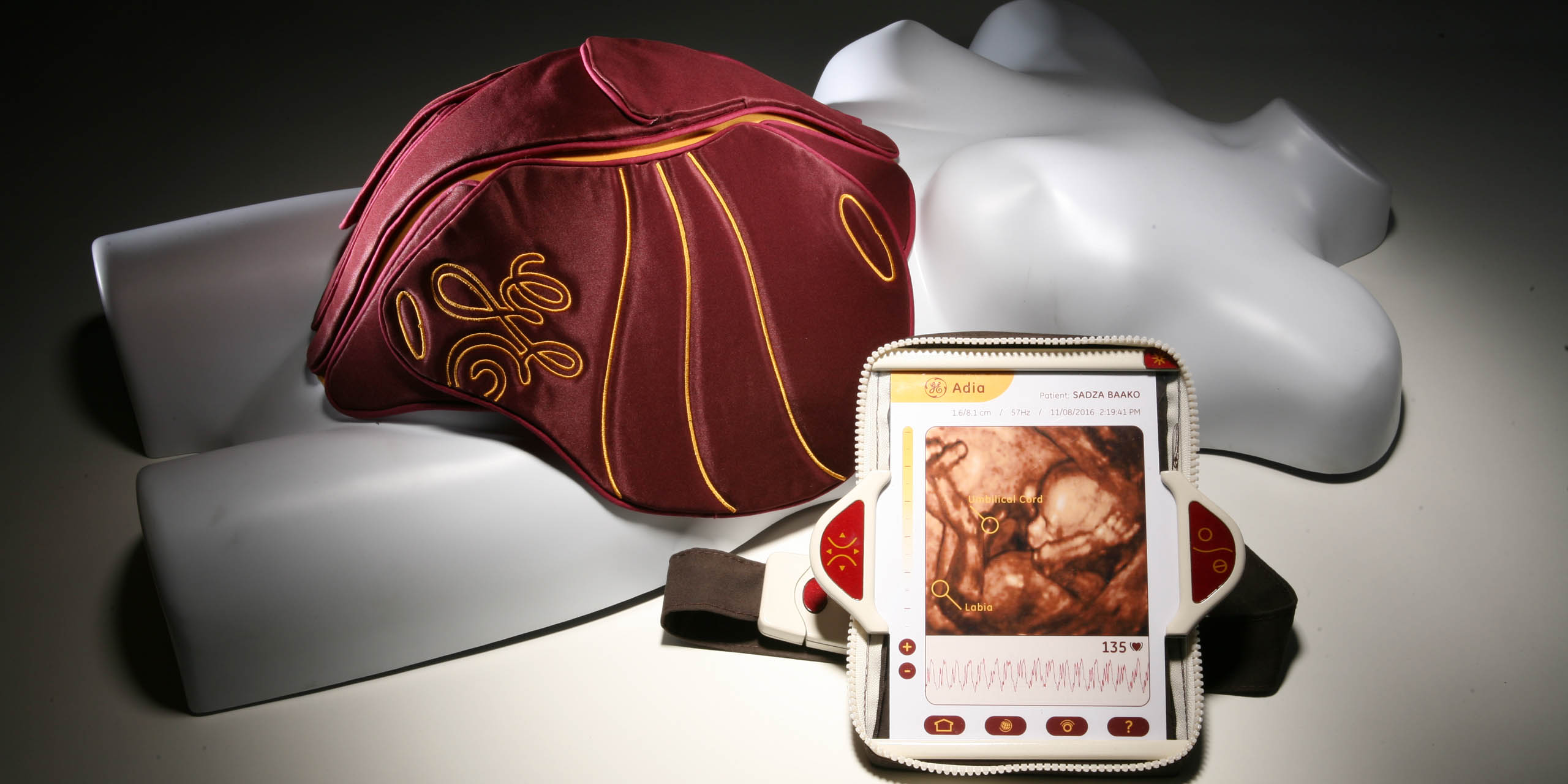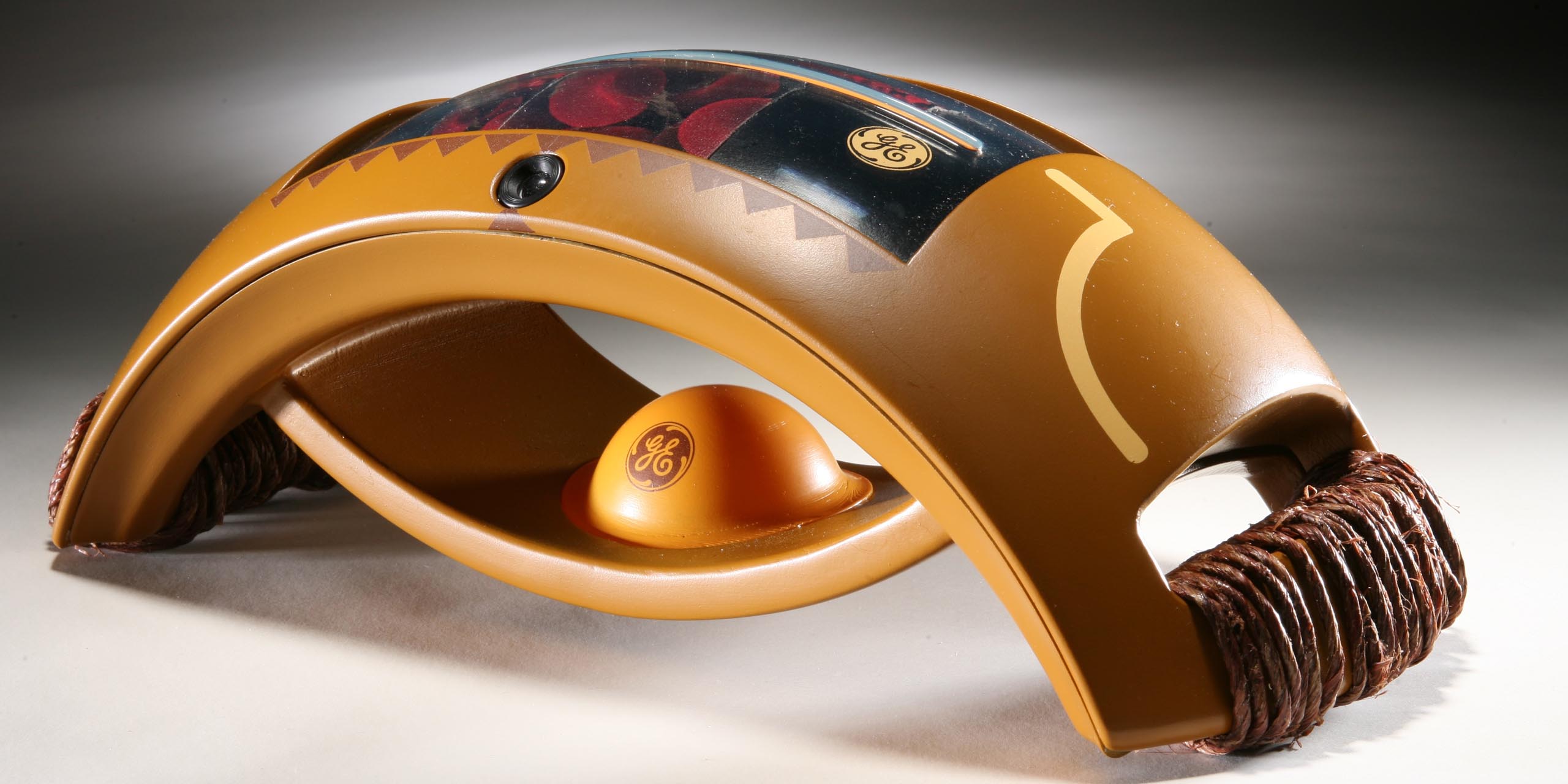GE Healthcare: Healthcare Anywhere
- Global Health
- Sustainable Development

Fall 2006
What happens when a global company meets a small design school? In the case of GE HealthCare and ArtCenter College of Design, a collaborative effort with tremendous real-world applications.
In fall 2006, GE Healthcare funded an educational project at the College that yielded a series of innovative design-based solutions to an urgent challenge: to deploy new medical technologies in remote regions of Africa where most people have never seen advanced medical care of any kind. Working closely with top GE Healthcare professionals, a select team of ArtCenter product, environmental, and transportation students and faculty responded to this challenge with exhilarating energy and creativity.
As the accompanying images show, many of the designs are currently feasible; others, while more complex, are still realistic. It would be easy, for example, to make a radio-transmitter bracelet that allows midwives and pregnant women to communicate over far-flung locations – sparing the lives of myriad mothers and babies. It will be possible to develop the team’s concept for a portable ultrasound device that’s easy to operate and comfortable for patients who would fear a conventional, more invasive examination, thus improving the diagnosis and monitoring of many conditions. Or to implement the team’s breathtakingly simple innovation: a mosquito net that becomes a headscarf by day, alleviating untold suffering. More futuristic, but equally compelling, is the team’s proposal for a dirigible to transport patients to hospitals from regions inaccessible to other vehicles, potentially saving many lives.

Art Center has long been renowned for producing remarkably “finished” work in its 14-week academic terms. The GE Healthcare sponsored studio, however, exceeded all expectations at the College and the company alike. Shortly after the project’s conclusion, GE Healthcare invited Art Center to display the final designs at corporate headquarters. Several of the product concepts were also cited at the 2007 MMVR Conference on medical technology, and others were nominated for the 2007 INDEX Prize conferred by the Danish government.
Most significantly, though, the GE Healthcare project reflects a powerful shift throughout the College and the international design community, as well as industry: a commitment to address the social challenges of our time through innovative collaborations that unite many disciplines and kinds of expertise. No longer are these activities marginalized as “do-good” humanitarian efforts. They are squarely within mainstream, bottom-line strategies driving today’s most creative work in business and design alike. This ethic is clearly stated in GE’s 2006 Citizenship Report, Solving Big Needs, which addresses such primary concerns as energy efficiency, environmental health and safety, and emerging market economies. Similarly, this approach is embodied in Art Center’s Designmatters program, which since 2001 has explored social and humanitarian applications of design and responsible business practices. Led by the International Initiatives department and involving chairs, staff, and faculty, Designmatters was essential in defining the brief for the GE HealthCare studio, and brought in medical and public health experts from leading agencies to lend their expertise throughout the project.
Healthcare Anywhere represents a vision shared by GE Healthcare and Art Center – a vision of corporate and educational leaders working together to help provide essential medical access as a means to a more dignified and humane life. Equally significant, this vision recognizes design’s vital role in collaborations that unite business and education, as well as seasoned expertise and younger talent, in addressing issues of profound relevance to us all. The resulting work encompasses all the factors – cultural, demographic, economic, geographic, and aesthetic – that when properly understood, transform design from a mere commodity into something urgently relevant to its users. These collaborations energize everyone involved and foster innovation in new realms. And as much as anything, these partnerships show that our collective future rests in great part on the creativity and skill of designers. The GE HealthCare studio was just a beginning, and sets a new bar for design education and the meaning of a truly educated designer: one who is fully engaged with, and by, the world we all live in.
